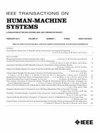EEG-Based Familiar and Unfamiliar Face Classification Using Filter-Bank Differential Entropy Features
IF 3.5
3区 计算机科学
Q2 COMPUTER SCIENCE, ARTIFICIAL INTELLIGENCE
引用次数: 0
Abstract
The face recognition of familiar and unfamiliar people is an essential part of our daily lives. However, its neural mechanism and relevant electroencephalography (EEG) features are still unclear. In this study, a new EEG-based familiar and unfamiliar faces classification method is proposed. We record the multichannel EEG with three different face-recall paradigms, and these EEG signals are temporally segmented and filtered using a well-designed filter-bank strategy. The filter-bank differential entropy is employed to extract discriminative features. Finally, the support vector machine (SVM) with Gaussian kernels serves as the robust classifier for EEG-based face recognition. In addition, the F-score is employed for feature ranking and selection, which helps to visualize the brain activation in time, frequency, and spatial domains, and contributes to revealing the neural mechanism of face recognition. With feature selection, the highest mean accuracy of 74.10% can be yielded in face-recall paradigms over ten subjects. Meanwhile, the analysis of results indicates that the EEG-based classification performance of face recognition will be significantly affected when subjects lie. The time–frequency topographical maps generated according to feature importance suggest that the delta band in the prefrontal region correlates to the face recognition task, and the brain response pattern varies from person to person. The present work demonstrates the feasibility of developing an efficient and interpretable brain–computer interface for EEG-based face recognition.利用滤波器库差分熵特征进行基于脑电图的熟悉和不熟悉人脸分类
对熟悉和不熟悉的人进行人脸识别是我们日常生活中必不可少的一部分。然而,其神经机制和相关脑电图(EEG)特征仍不清楚。本研究提出了一种新的基于脑电图的熟悉和陌生人脸分类方法。我们用三种不同的人脸唤醒范式记录多通道脑电图,并使用精心设计的滤波器库策略对这些脑电信号进行时间分割和滤波。滤波器库差分熵被用来提取辨别特征。最后,采用高斯核的支持向量机(SVM)作为基于脑电图的人脸识别的稳健分类器。此外,F-score 被用于特征排序和选择,这有助于在时域、频域和空间域可视化大脑激活,并有助于揭示人脸识别的神经机制。通过特征选择,十名受试者在人脸识别范式中的平均准确率最高,达到 74.10%。同时,结果分析表明,当受试者说谎时,基于脑电图的人脸识别分类性能会受到明显影响。根据特征重要性生成的时频地形图表明,前额叶区域的三角波段与人脸识别任务相关,而且大脑反应模式因人而异。本研究证明了为基于脑电图的人脸识别开发高效且可解释的脑机接口的可行性。
本文章由计算机程序翻译,如有差异,请以英文原文为准。
求助全文
约1分钟内获得全文
求助全文
来源期刊

IEEE Transactions on Human-Machine Systems
COMPUTER SCIENCE, ARTIFICIAL INTELLIGENCE-COMPUTER SCIENCE, CYBERNETICS
CiteScore
7.10
自引率
11.10%
发文量
136
期刊介绍:
The scope of the IEEE Transactions on Human-Machine Systems includes the fields of human machine systems. It covers human systems and human organizational interactions including cognitive ergonomics, system test and evaluation, and human information processing concerns in systems and organizations.
 求助内容:
求助内容: 应助结果提醒方式:
应助结果提醒方式:


